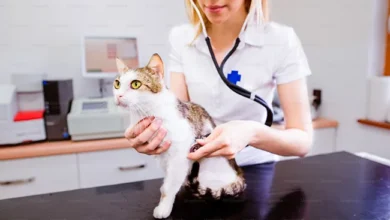
As the age-old saying goes, dogs are a man’s best friend. Any dog owner would agree. And like any good friend, taking care of your dog is a top priority. The list can extend from providing daily essentials like food and toys to purchasing more expensive things like pet insurance. The latter is a good investment to have in case of health scares and sudden emergencies.

Read More:
- The Average Cost of Pet Insurance: A Basic Guide
- Essential Elements to Consider When Choosing Pet’s Grooming Companies
- The 7 Things You Need to Ask When you get pet insurance
- What is Pet Insurance and Why You Need One
- 5 Tips for Taking Care of Your New Puppy
For parents of dogs aged six and above, you may think this luxury no longer applies to you and your senior pet. While it is ideal to purchase pet insurance while your dog is younger, some insurance companies offer policies for senior pets. Not only will it assure you of your dog’s proper protection, but it also saves you from big veterinary expenses.
If you’re a pet parent looking to purchase a plan for your dog, this article could help you out. We’ll discuss all things pet insurance for senior dogs. What does it cover? Is it worth the cost? Read to learn more.
What Is Pet Insurance?
Pet insurance can help with the cost of your pet’s veterinary services. This may range from basic tests and medication to more costly services like surgery. Below is a comprehensive list of the services usually covered.
Basic services covered:
- Injuries from accidents, like broken bones or ingesting an inedible object
- Illnesses like cancer, glaucoma, and parvovirus, to name a few
- Surgery, like ligament tears and cataracts, to name a few
- Medication
- X-rays
- Blood tests
- MRIs
- Emergency tests
Services not included:
- Pre-existing conditions
- Routine checkups
- Preventive care
- Neutering
- Vaccinations
Types of Pet Insurance
In relation to the services above, there are three general types of pet insurance, all varying in their coverage of services.
- Accident-only plans
- Accident-illness plans
- Accident-illness plans with additional wellness services like pet grooming, teeth cleaning, and flea treatment.
Keep in mind that these are just general plans. The coverage will ultimately depend on the pet insurance company and the services you opt to include. Some companies offer optional services like therapies, behavioral modifications, lost pet rewards, nursing, chiropractic services, acupuncture, and hydrotherapy.
Pet Insurance Coverage for Senior Dogs
For senior dogs, it would be a good idea to get a pet insurance plan that covers accidents and illnesses. This includes any treatment or procedure needed due to an accident or common illness. However, due to the age of senior dogs and their susceptibility to more illnesses, some providers limit the coverage.
Again, a pet insurance coverage policy varies per insurance provider and your preferences. This is more so the case with older dogs. You will need to discuss your dog’s medical history in detail with the provider to finalize a plan that is worth it for you.
Cost of Pet Insurance for Senior Dogs
Like health insurance, a pet insurance policy requires a monthly or annual fee to be paid to the pet insurance provider, regardless if you claim it or not. Depending on your pet insurance provider, you can spend as low as $15 per month or as much as $100 per month. On average, dog owners spend somewhere around $50 per month.
Here are other payment terms to take note of. Consider these factors when choosing the right pet insurance provider.
- The payout limit or maximum amount covered by the provider. Companies offer per-incident limits or annual limits.
- The deductible, which is the amount you have to pay for before your reimbursement is applied. This is important since you will still need to shoulder some expenses.
- The reimbursement rate, or the percentage of the amount the provider covers. As opposed to health insurance, a pet insurance company will reimburse you the amount after the bill is settled. Most companies cover 80% of the bill, with some shoulder 100% of the expenses.
As expected, getting a policy for your senior dog will cost you more than a regular policy. They are deemed higher-risk patients because of their age and susceptibility to more health needs. Other factors also taken into account are the breed, size, and location.
How to Claim Pet Insurance
As previously mentioned, pet insurance companies do not pay the veterinary clinic directly. Instead, they reimburse you after the fact. All you need to do is submit a claim and provide the necessary documents and receipts. Most companies release the payment within one to two weeks.
Common Questions About Pet Insurance for Senior Dogs
Now that we’ve covered the basic information, here are some additional tips you should know before purchasing your pet insurance policy.
How old does my dog have to be to avail of a pet insurance policy?
Not all insurance companies offer policies for senior dogs. But for the ones that do, the limit is not always the same. Most providers require your dog to be 14 years old at most to grant you a policy. However, there are a few companies that have no age limit for their plans.
What if my dog has a pre-existing condition?
This will not stop insurance companies from granting you a pet insurance plan. The only caution is it will not cover services related to that pre-existing condition. Such is the case with most insurance plans, regardless of the dog’s age.
Is there a way to lower my premium?
Yes, there are several ways you can lower your premium. To state the obvious, enroll your pets for a policy when they’re young. As a more practical tip, enroll multiple pets under the same insurance provider. Some companies offer discounts for these packages.
In Conclusion
Regardless of your dog’s age or health condition, it is worth investing in a pet insurance policy. Although it is more costly for older dogs, it will help cut down your expenses and lower your stress level when dealing with a health issue. The key is to find the right pet insurance company, preferably one that has no age limit and offers extensive coverage for a reasonable premium. In the end, you and your pet will both be happier.



